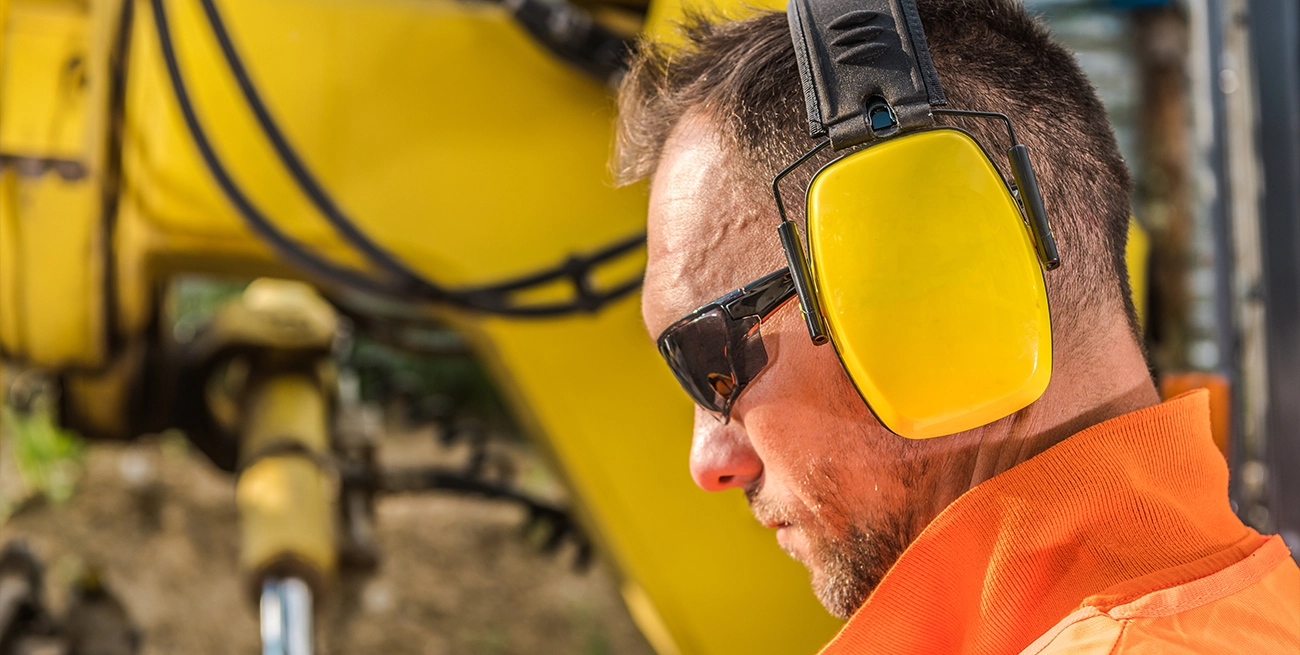Choosing the Right Hearing Protection for High-Noise Work Environments

Hearing loss isn’t sudden in most workplaces. It creeps up, taking its toll over years of exposure to loud machines, power tools, and industrial equipment. The hum of a factory floor or the roar of heavy machinery might not seem dangerous in the moment, but without protection, long-term damage is almost guaranteed. Choosing the right hearing protection isn't just about meeting regulations—it’s about keeping workers safe, comfortable, and able to communicate while on the job.
Understanding Noise Levels on the Job
Before picking hearing protection, it helps to know what kind of noise you’re dealing with. Decibel (dB) levels tell part of the story, but duration matters too. A quick burst of 110 dB from a nail gun isn’t the same as spending eight hours next to a 95 dB conveyor system. OSHA sets limits on exposure: 85 dB over an eight-hour shift is the threshold where hearing protection becomes necessary. Go above 100 dB, and safe exposure time drops to 15 minutes.
Here are some common workplace noise levels:
- Chainsaws: 110 dB
- Pneumatic drills: 100 dB
- Forklifts: 90 dB
- Manufacturing machinery: 80–100 dB
- Normal conversation: 60 dB
If employees have to raise their voices to speak at arm’s length, chances are they need protection.
Types of Hearing Protection
There are plenty of options, but the three main types used in industrial settings are earplugs, earmuffs, and custom-molded protectors. Each has its strengths, and the right choice depends on noise level, work conditions, and how long workers need protection.
Earplugs: Small but Effective
Earplugs fit inside the ear canal and block noise by sealing off the ear. They’re lightweight, inexpensive, and easy to distribute in large quantities.
Options include:
- Foam Earplugs: Expand to fit the ear canal, offering high noise reduction. Good for one-time use or daily replacement.
- Pre-Molded Earplugs: Made from silicone or rubber, these don’t require rolling and can be reused.
- Banded Earplugs: Connected by a headband, they’re easy to remove and reinsert when needed.
Earplugs work well in extremely loud environments, but they need to be inserted correctly to be effective. If they’re not deep enough, they won’t block noise as intended.
Earmuffs: Reliable and Reusable
Earmuffs cover the entire ear with padded cups that block sound. They’re easy to put on and take off, making them ideal for workers who move in and out of noisy areas.
Key features:
- Adjustable headbands for a secure fit
- Soft padding for comfort over long shifts
- Electronic models with microphones that allow communication while blocking harmful noise
Earmuffs provide consistent protection, but they can get hot in warm environments. If workers need to wear other headgear, like hard hats or safety goggles, compatibility can be an issue.
Custom-Molded Protection: Best Fit, Best Seal
For workers exposed to high noise levels every day, custom-molded earplugs provide the best fit. They’re made from impressions of the wearer’s ears, ensuring maximum protection and comfort.
Advantages:
- Personalized fit reduces pressure and discomfort
- Durable and long-lasting
- Better noise isolation than standard earplugs
The downside? They cost more upfront and require a fitting process, but for employees in extreme noise environments, they’re worth it.
Noise Reduction Ratings (NRR): What Do They Mean?
Every hearing protection device has a Noise Reduction Rating (NRR), which indicates how much noise it blocks in decibels. But the number on the package doesn’t tell the full story. If earplugs say they have an NRR of 30 dB, that doesn’t mean they reduce all noise by 30 dB. Due to real-world variables, OSHA recommends a more realistic estimate:
- For earplugs: Reduce the NRR by 50%. A 30 dB rating provides about 15 dB of actual protection.
- For earmuffs: Reduce the NRR by 25%. A 30 dB rating provides about 22.5 dB of protection.
- For dual protection (earplugs + earmuffs): Add 5 dB to the higher NRR device. If earplugs have an adjusted rating of 15 dB and earmuffs provide 22.5 dB, total protection is about 27.5 dB.
Comfort and Fit Matter
Workers won’t wear protection if it’s uncomfortable. Earplugs that don’t fit well will be removed throughout the shift, reducing their effectiveness. Earmuffs that squeeze too tightly will get “forgotten” during breaks.
To improve compliance:
- Offer multiple sizes of earplugs to fit different ear shapes.
- Choose earmuffs with adjustable headbands to prevent pressure points.
- Allow workers to test different options before standardizing protection.
If workers find their hearing protection comfortable, they’ll be more likely to use it consistently.
Communication and Situational Awareness
In some jobs, blocking all sound isn’t practical. Workers still need to hear alarms, machinery alerts, or team instructions. Standard earplugs or earmuffs can make communication difficult, but there are solutions:
- Filtered earplugs lower harmful noise levels while letting speech pass through.
- Electronic earmuffs amplify voices and signals while reducing loud noises.
- Radio earmuffs allow teams to communicate without removing protection.
Workers in roles that require coordination—like construction crews or factory teams—benefit from options that balance protection with communication.
Protecting Hearing for the Long Haul
Hearing loss is permanent, but it’s preventable. Once damage occurs, it doesn’t come back, no matter how advanced hearing aids become. The best approach is to make hearing protection as routine as safety glasses and steel-toe boots.
Regular training helps reinforce proper use. Workers should know how to insert earplugs correctly, adjust earmuffs for a proper seal, and recognize when protection needs replacement. Noise levels should be checked periodically, and if equipment or processes change, hearing protection should be reassessed.
Small Adjustments, Big Difference
A well-run facility prioritizes safety in ways that don’t slow down operations. Making hearing protection easy, comfortable, and accessible keeps workers safe without disrupting productivity. Over time, those small daily habits—putting on earplugs, adjusting earmuffs, checking noise levels—add up to a workplace where hearing remains intact well into retirement.


